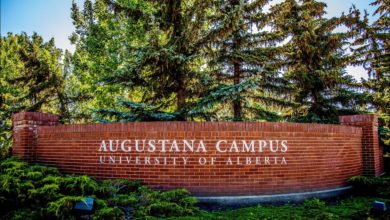 Alex Patterson
Alex PattersonThis series is written anonymously by contract instructors at the University of Alberta. Unlike fully-tenured professors who have a higher salary and job security, contract or sessional instructors often have a heavier course load, must renew their contracts each year, and earn significantly less than what most tenured professors make. Working conditions as a contract instructor generally aren’t good, and obtaining a tenure position isn’t easy.
Read The Gateway‘s feature on contract academic staff: https://thegatewayonline.ca/2016/11/contract-instructors-feature/
The first article in this series discussed the idea of the precariat, that section of the labour force whose employment is precarious in nature, subject to forces that often have little if anything to do with how well the job is done or how hard the employee works. Other terms for this precarious employment are contingent labour and good old casual labour. In plain terms, this is temporary employment, lacking in job security and often long-term career prospects. Despite this, there are many people who work in this sector of the economy who manage to do well for themselves; many free-lancers, contractors and consultants can earn higher-than-average wages if the work they do is in demand. However, that is almost never the case in academia, where contingent labour is usually anything but a pathway to “doing well in life.”
And so we come to the University of Alberta. Not that it is any different from universities across North America in its use of contingent academic labour, but since it is our university and the writer is employed in a contingent fashion here, let’s consider what the employment landscape looks like at the U of A for academics with graduate degrees who wish to work in higher education (noting as always that things are very similar at every Canadian and American university).
Academic employees at the U of A can be broadly divided into two basic categories: those with permanent positions and those without. Academic employees that are permanent (or “continuing,” as the University’s Collective Agreements page refers to them) include “Administrative and Professional Officers” (APOs), “Faculty Service Officers” (FSOs), “Librarians” and “Faculty” (here referring to permanent academic employees who do not fall under the other categories). In general, these permanent employees either already have tenure (about which, more later) or are in a “tenure-track” position.
And the non-permanent positions? There are three broad designations for those: “Contract Academic Staff: Teaching” (CAST), “Sessional and Other Temporary Staff” (SOTS) and “Trust/Research Academic Staff” (TRAS). The majority of non-permanent employees are CAST, as in “castaway” or “downcast” or “outcast.” Surely the acronym is just a coincidence, right? Although there is no clear explanation on the University Human Resources website regarding the differences between CAST instructors and Sessional instructors, the prime responsibility of both is teaching, in contrast to the TRAS folks, who are employed to do research. Most of my remarks in this series concern those involved in contract teaching, but the instability of such employment obviously applies to contract researchers as well.
So, what’s the problem with academics being employed as non-permanent employees? Precisely this: most of us have the same qualifications (first and foremost, a doctorate, not an easy or quick thing to obtain) and for the most part we are involved in the same types of activities as those with permanent academic employment. However, those of us who have tenuous academic employment are in a very different situation from those who are tenured or tenure-track when it comes to pay and benefits. And this is not something that affects a small portion of the academic labour pool. But more about that later…




